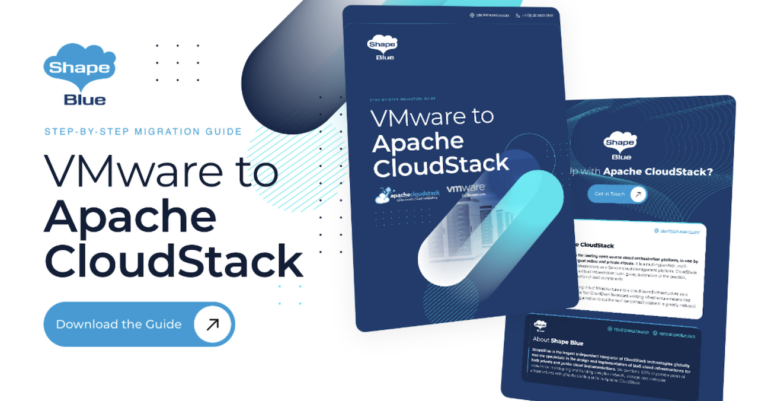
© Copyright – ShapeBlue Ltd 2013-2024. All rights reserved.
ShapeBlue Ltd is a company incorporated in England & Wales. ShapeBlue is a registered trademark.
CloudStack and the CloudStack logo are trademarks of the Apache Software Foundation.

Download a step-by-step guide to migrate your existing vSphere environment to a robust IaaS cloud environment based on Apache CloudStack and the KVM Hypervisor, ensuring a smooth, low-friction migration journey.